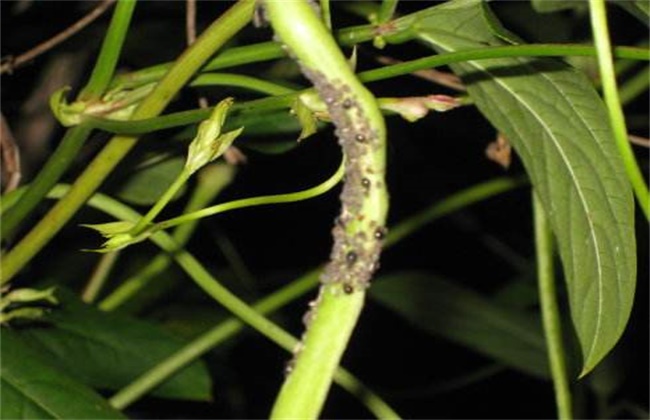Prevention and control measures of heart borer of string bean
Cowpea borer, also known as cowpea borer, is the most common disease in the growth process of kidney bean. Because of its rapid reproduction and wide area, it is difficult to kill it completely. In order to help you better control this kind of insect pests, the following editor brings you the prevention and control measures of the heart beetle of string beans, let's take a look.

1. Pay attention to agricultural prevention and control
It is necessary to remove the fallen flowers and pods in the field in time, remove the injured rolled leaves and pods, bury them deeply or burn them, and destroy the larvae in the flower buds in time, so as to prevent the further transfer of insect pests. It is necessary to water more in winter and spring to improve the soil moisture, so that the cocoon larvae die and turn deeply into the soil in winter, so that the overwintering larvae in the soil are exposed, frozen to death or pecked by birds, so as to reduce the source of overwintering insects.
2. Strengthen the management of fertilizer and water
In the planting management, it is required that the seedlings should emerge all the time, grow neatly, and the flowering and podding period should be relatively concentrated, so as to avoid the concentrated elimination of drillworms in this period, so it is necessary to strengthen fertilizer and water management, apply sufficient flower and pod fertilizer at one time, and properly remove the flower buds that open early or delayed. The period of maturity is consistent, which is conducive to the control of insect pests.
3. Biological control
In the peak stage of the larvae, biological control methods can be used, which can be sprayed with 500x solution containing 10 billion live spores per gram of cyanobacteria or borer killing bacilli or BT emulsion, or spraying with 300x solution of Beauveria bassiana containing 10 billion live spores per gram. It should be noted that the bacterial liquid should be used with it. Beauveria bassiana should be sprayed in 2 hours, once every other week, several times in a row.
4. Chemical control
Chemical control adheres to the principle of "controlling buds mainly". Spraying chemicals during flowering period can kill the larvae in the buds. The best spraying time is from 8 to 10:00 on a sunny day, when the bud is in full bloom, which is beneficial for the liquid to enter into the buds and kill the larvae in time. In addition, after flowering, the pods can be sprayed 1-2 times when the pods grow to more than 10 cm, which can kill the newly hatched larvae and the young larvae that enter the young pods. Chemical agents should be selected to have no harm to flowers and young pods, and have better permeability. You can choose permethrin, quick killing, synergistic cyanohorse EC, kung fu and other agents. Pay attention to the alternate use of chemicals to avoid drug resistance, spray once every 7 days, spray 2-3 times in a row. It can also be made into poisonous soil by mixing soil with dichlorvos during the peak period of adults, and it can be poisoned evenly on the ground.
The above is the introduction of prevention and control measures, hope to help you, want to know more related knowledge, please pay attention to us.
Related
- Where is it suitable to grow horseradish in China? it is expected to see the middle altitude horseradish in Alishan.
- How to prevent tomato virus disease reasonably? (Control methods included)
- Many people like to plant towel gourd on the balcony. What are the main points of this method and management?
- What crops can chili peppers be mixed with?
- Fertilization techniques and matters needing attention in Tomato
- What are the grafting techniques for peach seedlings in spring?
- Harm and control methods of root swelling disease of Chinese cabbage
- What are the pests of sweet potatoes? How to prevent and cure it?
- Symptoms, causes and Control methods of navel Rot in Tomato
- The cause of "Cucumber rotten bibcock" in Farmers' planting Cucumber and its Control Plan



